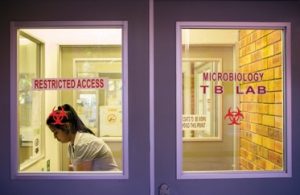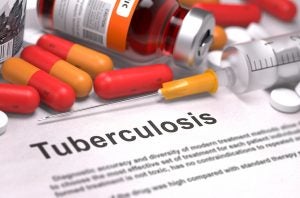A colleague recently observed that we are addressing one of the most ancient diseases with approaches nearly as ancient, including over-hospitalization, use of involuntary isolation and in some countries, use of discriminatory and punitive laws which violate human rights and impede the fight against TB. Draconian laws are not the only archaic aspect of the response to TB; we are still largely fighting TB with outdated tools and medicines even though there are better, more effective ones that have been developed.
By way of background, Mycobacterium tuberculosis, the bacteria that causes TB, has plagued humanity since antiquity. TB was present in the Neolithic period (5800 BCE) and in ancient Egypt—fragments of mummies from 2400 BCE have shown signs of tuberculosis. Often a killer of characters in historical novels and films, tuberculosis, also referred to as ‘consumption,’ or ‘phthisis’ in past eras, may have killed more people than any other microbial pathogen in human history. The development of TB chemotherapy in the 1940s and 50s was significant, since for the first time TB could be effectively treated, although these medicines included major side effects including killing outer and inner hair cells which can result in hearing loss.
While many countries, particularly higher income countries, were able to significantly reduce TB incident rates by the 1980s, the AIDS epidemic has been a significant contributor to the large increase in incidents and high TB mortality that we see today. This is especially the case in developing countries who have been disproportionately impacted by HIV, particularly in contexts in which there are serious health system challenges and weaknesses.
Today, we are still largely fighting this ancient disease with older diagnostic tools and medicines; the better and more effective medicines are generally unavailable to those who need them. In fact, only 5% of people in need of newer, more effective TB medicines for drug-resistant strains have access to them. This means that people have no choice but to take older, more toxic drugs which cause deafness and psychosis and only cure 50% of people who take them. With regard to diagnostics, sputum smear microscopy is still the most common diagnostic method which only tests for pulmonary TB (not extra-pulmonary), is difficult for children to produce and does not have sufficient specificity. An additional challenge, People Living with HIV often have false negatives in TB tests because they have lower bacteria count than HIV-negative people who have TB (including microscopy and to some extent also in some nucleic acid amplification tests).

photo: MIT Review
While more rapid diagnostic tools and tools that better address gaps have been developed, such as the GeneXpert and LAM test (especially important for TB testing for People Living with HIV with low CD4 counts) these tools are not widely available in many countries and also have diagnostic deficiencies. For example, GeneXpert produces errors when exposed to dust and LAM has very low sensitivity. A significant development, the GeneXpert Ultra (next generation of GeneXpert) has improved sensitivity in TB detection for People Living with HIV and children and was endorsed by WHO in March 2017. This will be a game changer for those who have access to the tool.
In addition to the use of outdated diagnostics and medicines, in some countries public health laws, criminal laws, and treatment protocols are similarly outdated, and lack a human rights-based, participatory and patient-centered approach. For example, several countries have public health or other laws which criminalise or broadly allow for isolation, detention and quarantine in the context of infectious diseases including TB. Criminal laws may be for ‘exposure’ or similar offenses. In extreme cases, patients have been imprisoned for inability to adhere to TB treatment. Even when not TB-specific, such provisions may confer wide legal authority on health workers to involuntarily detain TB patients for long periods. Even when not enforced, provisions of this nature further stigmatise people with TB and tend to have the effect of driving people with TB and key populations underground and away from health facilities.
While there is reasonable concern over the spread of TB, particularly drug-resistant strains, ensuring meaningful access to TB prevention, diagnostics (including for drug resistance), treatment, care and support is the most effective and appropriate approach to stem the spread. Notably, once a patient is on effective treatment for two to three weeks they are typically not contagious. In general and especially in light of this, use of involuntary isolation and coercive treatment raises serious ethical and human rights issues, particularly in contexts in which there is inadequate access to drug resistance testing. For example, some countries have laws which allow for mandatory testing, treatment, hospitalisation and isolation; yet at the same time do not provide comprehensive access to rapid and effective drug-resistance testing or effective medicines for MDR-TB. Improving access to effective and quality community-based treatment, care and support and moving away from coercive and punitive approaches to TB are essential steps to modernise TB care, safeguard medical ethics and human rights, and most certainly to end TB by 2030.

photo: Biospectrum Asia



